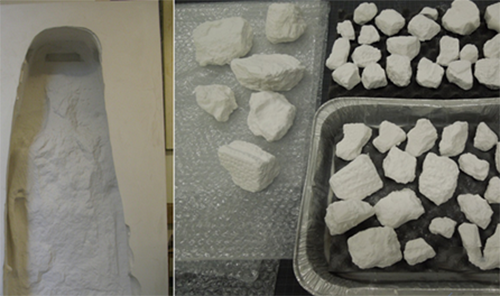Geomagic Studio software and ProJet series full-color printers help rebuild the Bamiyan Buddha in Afghanistan
In the Bamyan Valley surrounded by cliffs in central Afghanistan, two huge niches face each other from the grotto. They used to be the home of the Bamiyan Buddha: two huge Buddha statues were carved from stone and whitewashed with stucco. The larger Buddha statue is 53 meters high, and the smaller Buddha statue is 35 meters high. They are examples of Gandhara art in the ancient Indian kingdom. The statues were built in 554 and 507 AD. They are the embodiment of one of the world's ancient civilizations. They were once the largest stone standing Buddha statue in the world. But on March 12, 2001, explosives destroyed this 1500-year-old civilization statue and plundered a war-torn country. The important symbols and cultural symbols of their unique Greek Buddhist art were destroyed.
Recently, a team of repairers, architects and engineers is rebuilding the Bamiyan Buddha, hoping to restore her symbolism to the Afghan people, and 3D Systems is also involved. The team responsible for the remodeling used 3D Systems' Geomagic Studio® scanning software and ProJet® series of full-color 3D printers to prepare for this major task. In 2009, they began to plan the reconstruction of the Bamiyan Giant Buddha. The Giant Buddha and its surrounding areas were listed as a World Heritage Site in 2003. This project is funded by a number of countries and organizations, led by UNESCO and the International Council of Monuments and Sites

For Ing. Sekandar Ozod-Seradj, one of the engineers involved in the reconstruction task, this is a passionate project. As a member of the International Council of Monuments and Sites, born in Afghanistan, his growth was deeply influenced by Afghan culture and the remains of the Great Buddha. Ozod-Seradj devoted himself wholeheartedly. He discovered that Afghanistan’s aftermath organization e.V., projects include the headquarters of Afghan President Del Kusha and a royal palace called Kuti-e Baghtscha. But as a member of the International Council of Monuments and Sites, the reconstruction of the Bamiyan Buddha was the most important to him. He used Geomagic Studio and ProJet series 3D printers as assistance.
Geomagic Studio reverse engineering software is widely used in archaeological and archival projects all over the world because it can reliably convert 3D scan data into high-precision surface models. It also has an easy-to-learn and easy-to-use user interface. In field tests, this software performed well. After collecting and fixing all the Bhafo broken stones, code the stones and put them in boxes. In addition to scanning the niche, the architects also scanned larger stones. The crushed stones were measured for magnetic alignment and sedimentation structure, in order to better match them with each other. After the scan, the team processed the huge amount of data, manually filled the broken holes in the model, and used Geomagic Studio software to create an impeccable surface model. Once the broken stones are processed and repaired by the mesh processing tool of Geomagic Studio software, they will be printed into a model at 1/25 size by 3D System's ProJet series full-color printer. In addition, they also printed out the niche. At the same time, they will use these precise size models to try to reassemble the pieces of the Bamiyan Buddha a little bit. Considering the steep terrain of this area and the need for large-scale equipment for post-reconstruction projects, the team must know in advance what the challenges they are facing, and the size model can help them prepare for these challenges in advance.

This international team of experts from Afghanistan, France, Italy, Japan and Germany has seen the growing positive attitude of the local people. They hope that this attitude can continue to spread to others. "Through our work, we have given the Bamiyan Buddha and local people the opportunity to live in this unique historical and scenic area," said Sekandar Ozod-Seradj. "Through these, we strive to give them a place where they can visit in the future and eventually find peace."
![]() Tel:+86 135 7086 9158
Tel:+86 135 7086 9158![]() Tel:+86 135 7086 9158
Tel:+86 135 7086 9158

